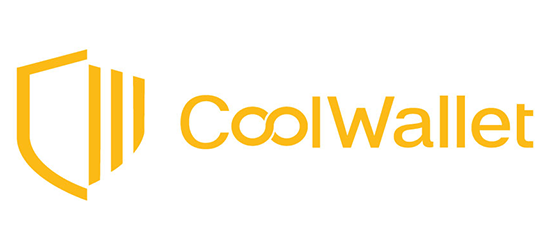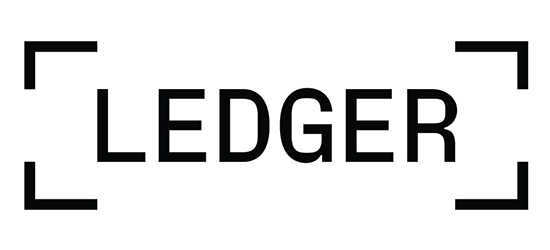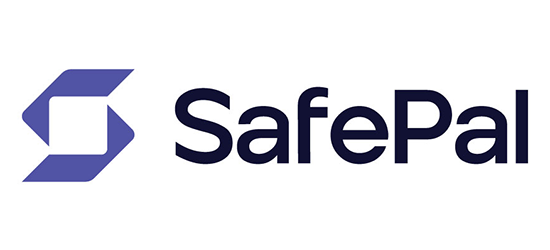
Ledger
Ledger is a company that develops security and infrastructure solutions for cryptocurrencies and blockchain applications.
About Ledger
| Foundation | 2014 |
| Headquarters | Paris |
| Founders | Eric Larcheveque, Nicolas Bacca, Joel Pobeda, Thomas France |
| Revenue | $53.4 million per year |
| Products | Hardware wallets |
Ledger was founded in 2014 in Paris by a group of eight professionals with extensive knowledge in embedded security, cryptocurrencies and entrepreneurship. Among them, Eric Larcheveque and Nicolas Bacca became CEO and CTO respectively. As of 2019, the position of Ledger's CEO is held by Pascal Gauthier.
The company's main goal has been to secure a new asset class: cryptocurrencies. Throughout its existence, Ledger has managed to develop its own operating system, BOLOS, which is integrated into chips for the company's line of wallets, a SaaS solution for corporate clients, and hardware wallets.
Products
Ledger's main product was a line of hardware wallets. The company quickly managed to sell over 1,000,000 devices in over 165 countries.
Ledger Nano X
This is the cutting edge device in the company's line of hardware wallets. Ledger Nano X provides secure and convenient storage and management of crypto assets. The main convenience of this wallet is provided by the support of Bluetooth connectivity. This device easily connects to the phone, unlike its predecessor Nano S. The Nano X also supports a wide range of digital assets.

Source and Copyright © Ledger
It is a small ergonomic device weighing 34 grams with a USB Type C connector. The device is equipped with a rechargeable battery and can operate without a power connection. In this version of the wallet, the storage has been increased to accommodate a much larger number of coins, including the little-known ERC-20 tokens.
The Nano X runs on Ledger's BOLOS operating system and contains two separate chips. The STM32WB55 controls the BOLOS system, while the ST33J2M0 encrypts private keys and signs transactions. Additional security is provided by the hidden wallets function, which can only be accessed via a PIN code.
Ledger Nano S Plus
This is an updated version of the Nano S, released in 2022. At this time, the company is no longer producing the Nano S. Meanwhile, the Nano S Plus has collected the improved qualities of the older version. The hardware wallet supports storing up to 100 different crypto assets. The wallet uses certified Secure Element (SE) chips, which are hack-resistant. It also uses a proprietary OS called BOLOS. The memory of this version of the wallet is much lower than the Nano X. The Nano S Plus does not have Bluetooth, and is more suitable for storing small amounts of cryptocurrencies. The connectivity is via a USB-C connector.

Source and Copyright © Ledger
The Nano S Plus is the size and shape of a regular USB drive and weighs 21 grams. The screen is 128×64 pixels, which is larger than the previous version. The Nano S Plus features the ST33K1M5 security chip, which is CC EAL5 certified. The hardware wallet is controlled by two buttons on the top of the hardware wallet.
Ledger Nano X vs. Ledger Nano S Plus: Which is better?
| Nano X | Nano S Plus | |
| Price | $149 | $79 |
| Asset support | 5,500+ and up to 100 applications | 5,500+ and up to 100 applications |
| Phone connection | Via Bluetooth | Via connector kit |
| Bluetooth | Yes | No |
| Device support | Mac, Windows, Linux, IOS, Android | Mac, Windows, Linux, Android |
| Security | CC EAL5+ | CC EAL5+ |
The best: Nano X
Ledger Nano S Plus and Nano X have the same security standards and support the same types of crypto assets. The main advantage of the Nano X over the Nano S Plus is the availability of Bluetooth to connect to the internet and access cryptocurrencies from anywhere in the world, as well as more memory to support 100 cryptocurrency applications.
Another difference is the price. The Nano S Plus is almost half the price of the Nano X. Despite this, a Nano S Plus owner will have to buy an OTG kit for $17.99 to connect to Android.
Ledger Stax
A relatively new device in Ledger's line of hardware wallets. The Stax is an interactive wallet. The company enlisted the designer of the original iPod, Tony Fadell, to create it. The Stax is characterized by its bright, large and curved display designed to show users' NFTs. There's a USB-C connector at the bottom of the device and a lock button on the side. The Stax charges wirelessly, and uses Bluetooth and NFC to connect with other devices.

Source and Copyright © Ledger
This credit card-sized, 6mm thick and 45 grams in weight device comes for a price tag of $279.
Ledger Live App
This is a feature-rich app to work with the Nano S Plus, Nano X, and Stax.
Ledger Live allows to update Ledger wallet, install apps that support more cryptocurrencies, and even buy and sell coins. In addition, the program offers multi-account management and real-time price changes. Users can also take advantage of the staking feature, easily set up new Ledger devices and import existing accounts into the app, combining the management of their crypto assets and device maintenance into a single interface.
The app allows you to buy, sell and manage cryptocurrency and NFTs, as well as use DApps. Ledger Live supports over 5,500 cryptocurrencies and even more when connected to other wallets. The app is available on Android, iOS, Windows, Mac, and Linux platforms.
How to set up a Ledger wallet
In order to set up your new Ledger device, you need to follow these steps:
- Download and install the Ledger Live app on your device (computer or mobile phone).
- Launch the app, and follow the on-screen instructions. At the end, you will be prompted to select your hardware wallet type.
- Tap "New Device" in the app.
- Connect your device to your cell phone or computer.
- Follow the prompts to set up your new device. Set your PIN and write it down on paper.
- Generate and write down the recovery phrase
- Return to the Ledger Live app and take a simple quiz to proceed to the next step of setting up Ledger Live.
- Connect and unlock your device. The screen will display "Allow Ledger Manager". Press both buttons to confirm.
How to fund your Ledger wallet
In order to fund your Ledger wallet, you need to:
- Open Ledger Live and connect your Ledger hardware wallet to the device running Ledger Live. Unlock the wallet with your PIN and press both buttons to allow Ledger Live to access the wallet. Go to the Manager tab, scroll down the app catalog and find the crypto asset you want to add, then click the Install button on the right side of the page.
- In Ledger Live, click the Receive tab on the left side and a smaller window will open. Select the account you want to credit and click the Continue button. Press both buttons on your Ledger to confirm that you want to open the application. Copy the public key, confirm it on the hardware wallet by pressing both buttons if the wallet displays the correct address.
- Withdraw the asset from the exchange using the public key address you just received.
Ledger wallet security features
All Ledger devices offer the same level of industry-standard security. The company uses certified Secure Element (SE) chips that are Common Criteria (CC) EAL5+ certified. In addition, the ANSSI has independently audited and validated the security of the devices.
Ledger sets itself apart from its competitors by using its own OS called Blockchain Open Ledger Operating System (BOLOS).
For added security, Ledger offers owners the use of a 24-word recovery phrase that only appears on the device and not in apps, PINs, and a two-button simultaneous altcoin purchase confirmation feature.
Supported Ledger Coins
The Ledger Live app supports 500+ different cryptocurrencies. However, thanks to third-party integrations, users can manage more than 5,000+ coins and tokens. The list of supported coins includes all major currencies and beyond. Ledger Nano X and Ledger Nano S support the same number of coins. Both devices can manage over 500 cryptocurrencies with Ledger Live. However, the number of supported coins can be increased to 5,000 if you use third-party wallets.
With Ledger Live, the Nano X and Nano S can be used to manage Ethereum- and Polygon-based NFTs, and the integration of third-party wallets will allow access to NFTs on other blockchains.
Pros and cons of Ledger wallet
Pros
- Cryptocurrency staking and NFT management capabilities
- Mobile application with Bluetooth connection
- High degree of security and reliability
- Provides full control over all private keys
- Provides access to decentralized applications (dApps)
- One of the most affordable cold wallets on the market
- Provides an extensive cryptocurrency library
- Access to all necessary cryptocurrency management services
Cons
- The software is not fully open source.
- Risk of losing access to funds if the company goes out of business.
- Some models do not support iOS devices.
- Complexity of installation and use.
Investments
Throughout its history, the company has been able to raise 8 rounds of funding. In 2021, Ledger managed to raise 356 million euros. And at the beginning of 2023, it added another 100 million euros. At the moment, the company is valued at €1.3 billion.
Significant investors in the company include True Global Ventures, Digital Finance Group and VaynerFund, 0T, Cité Gestion Private Bank, Cap Horn, Morgan Creek, Cathay Innovation, Korelya Capital and Molten Ventures.
Useful links






